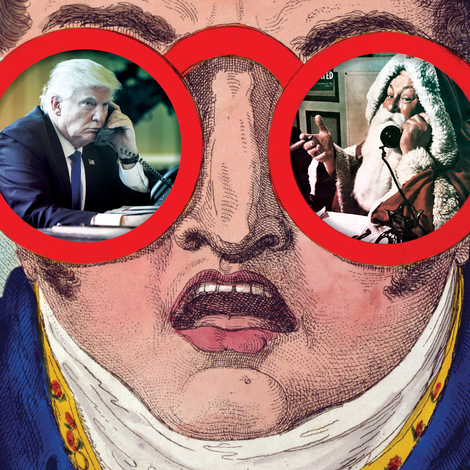In 1948, on BBC television, the artist Ithell Colquhoun demonstrated mysterious methods of summoning the spirit world into her work. For fumage, she passed a sheet of paper above a lit candle to create smoky trails. For parsemage, she sprinkled chalk over water to capture the patterns on paper. For décalcomanie, she achieved Rorschach-style images by pressing paint between papers.
The exhibition “Ithell Colquhoun: Between Worlds” opens today at the Tate seaside branch in St. Ives, Cornwall. In that ancient landscape—which became a place of magical connections for the artist-writer-poet-sorceress during the Second World War—Colquhoun found that the craggy cliffs and wild shores helped her access the vital forces among all living things and the beyond. She sought to transform herself and society, not through intellectual analysis but through the alchemy of the unconscious.

Like her contemporaries Remedios Varo, Alice Rahon, Leonora Carrington, and Leonor Fini, Colquhoun believed in the power of art to achieve cosmic consciousness. She studied the Kabbalah, Christian mysticism, Celtic and Egyptian mythology, Hindu Tantra, tarot, and Theosophy. In her hope to traverse dimensions, she even investigated astrology, geometry, and radioactivity.
Born in India, in 1906, Colquhoun felt a lifelong spiritual connection to her birth country despite the family’s relocation to England a year later. She attended a progressive girls’ school, followed by study at the Slade School of Fine Art, where her precocious prizewinning painting Judith Showing the Head of Holofernes was much admired. In her 20s, attracted to secret societies, Colquhoun was already on the road to spiritual enlightenment.

In 1935, influenced by the work of Salvador Dalí and the other Surrealists, which she first saw in France in 1931, Colquhoun moved away from realism and began to depict exotic flowers and botanical images. Nature and eros became gateways to the spirit world.
Her attendance at the Surrealist Exhibition of 1938, in Paris, led to heady times with fellow Surrealists in a château, where they mined the creative potential of the unconscious, aided by their favorite parlor game, exquisite corpse. Their tool kit of automatism (once described as “letting a line go for a walk”) subsequently led Colquhoun to pioneer her own inventive practices—Surrealist dogma did not satisfy her fierce quest for a harmonious cosmos.
Colquhoun’s novels and essays focused on a return to primal female powers, lost since ancient times; her imagery was neither male nor female but reflected something in between. (Indeed, though briefly married, she had close relationships with both men and women.) Like elixirs, exotic titles such as Children of the Mantic Stain, Grimoire of the Entangled Thicket, and The Waterstone of the Wise conjured further occult portals. “I plunge into another being,” Colquhoun wrote in a poem. “And touched by tendrils of forest / Or foam of ocean’s tongue / At one with you then / I sink into the abyss.” Her tarot deck was not illustrated with the usual archetypal figures but featured swirls of colorful ectoplasm. Magic, Colquhoun was convinced, was the way forward.

Colquhoun was 81 when she died, in 1988. She left her copious archive to the National Trust, and in 2019 it was acquired by the Tate. The St. Ives exhibition arrives as the planet appears to be reaching an environmental inflection point and seekers for alternative solutions proliferate. It moves to Tate Britain in London in June. Perhaps “Priestess Colquhoun,” as she was officially christened by an occult society, will manifest somewhere along the journey and lead the way to a more harmonious year.
“Ithell Colquhoun: Between Worlds” is on at the Tate St. Ives, in Cornwall, England, until May 5
Patricia Zohn has contributed to numerous publications, including Wallpaper, Artnet, the Huffington Post, The New York Times, and the Los Angeles Times


